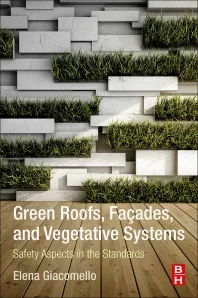Cool Roofing: At Home with Cool-Colored Roofs

Cool roofs cut cooling loads by up to 20 percent through the use of reflective materials that limit solar heat gain. A conventional cool roof features light-colored surfaces - shades that commercial facilities with flat or low-sloped roofs find acceptable. However, homeowners typically prefer the aesthetics of darker colors for their steep-sloped roofs. Until recently, there were no cool roofing products available in darker, more appealing hues, but things are changing, and homeowners now have more choices when it comes to cool roofing technology.
Manufacturers have now developed dark-colored pigments for roofing materials that are more effective at reflecting sunlight. These pigments are now being used in coatings for metal roofs, in clay and concrete tiles, and in the multicolored granules of which shingles are comprised. Cool-colored roofing products look like their standard counterparts, but they reflect more sunlight, absorb less heat, and stay cooler. (See Figure 1.)
Cool-colored coatings for metal roofs are commercially available, and the first cool-colored shingles designed for the residential market have recently been introduced. In addition, cool coatings for retrofit tiles have been developed by American Roof Tile Coatings that can be used to replace older tile roofs that have lost their color. Homeowners can also use these tiles if they simply wish to convert to a cool roof. More shingle and tile products are under development, and the future looks bright for cool roofing as more and more homeowners are coming to realize the benefits of a more reflective roof.

Features and Benefits
Solar reflectance - the percentage of the sun's incident radiation that a material's surface reflects - is an indicator of how cool a roof will be. Other elements being equal, the higher the solar reflectance of the material, the cooler the roof will be. With funding from the Public Interest Energy Research (PIER) program, a few manufacturers have developed dark-colored shingles for use on steep-slope roofs that offer a reflectivity of 25 percent or more. Traditional dark-colored, steep-slope materials have solar reflectances of about 4 to 18 percent, whereas a light-colored cool roof offers a reflectivity of about 70 percent. Elk Premium Building Products, a shingle manufacturer that is using granules developed by 3M, offers five shingle products with reflectances of 25 percent to 27 percent in popular colors, such as slate and gray.To help manufacturers ensure that cool roofing products will stand the test of time, the PIER-funded cool-colored roofing materials program provides field-testing and analysis services. Oak Ridge National Laboratory (ORNL) established a steep-slope test assembly at its facility in Tennessee to evaluate samples from manufacturing partners. Researchers are measuring the changes in physical composition and appearance as a result of exposure to ultraviolet light, weathering, and temperature changes.
A team from Lawrence Berkeley National Laboratory (LBNL) and ORNL has also set up seven test sites in six different climate zones in California. Situated in locations ranging from far north to the extreme south, these sites experience climates ranging from mild to severe. The labs will set up tests at these sites using materials from all of the participating manufacturers. The Sacramento Municipal Utility District is also measuring energy savings and changes in indoor temperature and humidity at test houses equipped with cool roofs in its service territory.
There are two good sources of information about cool-colored roofing materials. LBNL has developed a Web-based database that describes 87 cool-colored pigments and their respective roofing products. The U.S. government's Energy Star program maintains a list of cool-roof materials and their manufacturers, but it doesn't verify the accuracy of the information. The Energy Star rating system and material testing is managed by the Cool Roofs Rating Council (CRRC). To qualify for the Energy Star Roof Products list, a steep-slope product must have an initial solar reflectance of greater than or equal to 25 percent and maintain a reflectance of at least 15 percent three years after installation.
Roofing materials made with cool-colored pigments cost about the same or slightly more than traditional products, depending on the color. The higher cost, however, can be offset by energy savings.

Applications
Residential applications are the primary target for cool-colored roofing materials, because houses tend to have steep-slope roofs and aesthetics are a crucial issue. Also, cool roofs work best in hotter climates. In more moderate climates, the heating load penalty tends to offset the cooling energy savings. (See Figure 2.) However, some commercial facilities have year-round cooling loads, and steep slopes and would therefore be good candidates for cool-colored roofs, no matter what climate region they are in.California Codes and Standards
Some of the cool-colored roofing products that result from this research may qualify as cool roofs in the California building energy code (the 2005 Title 24 California Building Energy Efficiency Standard), which took effect on Oct. 1, 2005. To qualify for compliance credit as a cool roof under the new code, a roofing product must have a minimum initial solar reflectance of 70 percent. An exception is made for clay tiles to be used on residential buildings, which must have a minimum initial solar reflectance of 40 percent. Cool roofs will be revisited in the 2008 Title 24 standards, which may include incentives for using colored materials with lower levels of reflectivity.What's Next
Manufacturers will continue to develop new pigments for shingle granules and tile coatings. Researchers are also focusing on quantifying the benefits of cool-colored roofing materials. The ability to rate three-dimensional materials, such as Spanish tiles, has been a problem in the past, but that issue is being addressed by the CRRC with funding from PIER.The cool-colors project is a collaborative research and development project between PIER, the roofing industry, and the Oak Ridge and Lawrence Berkeley National Laboratories.
Looking for a reprint of this article?
From high-res PDFs to custom plaques, order your copy today!





